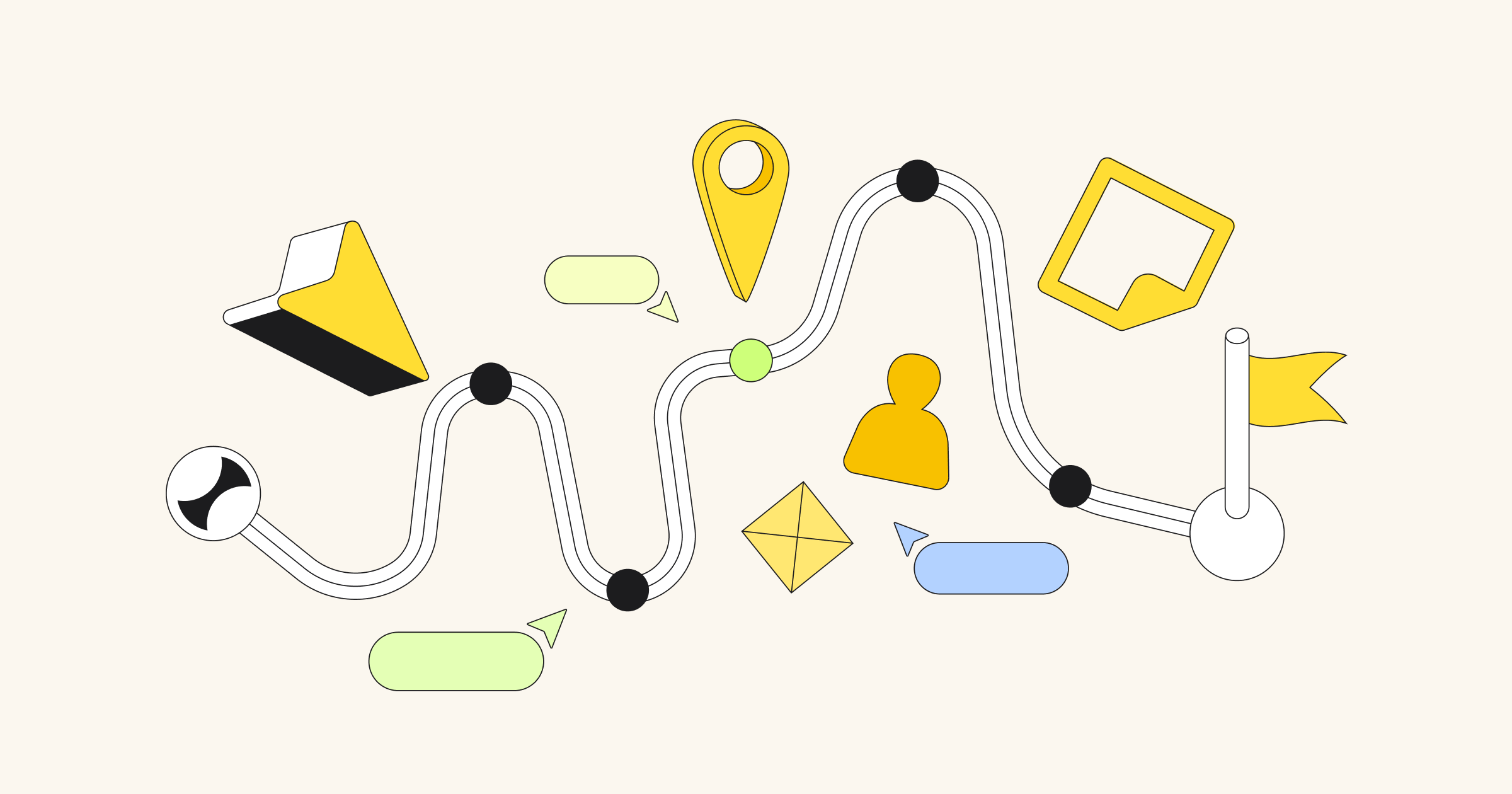For many, Facilitating a meeting or a workshop may seem like a dreadful task. Facilitating a remote workshop – even more so. There’s something inherently challenging about not being in the same room with your team. You can’t really revert to small talk when the atmosphere gets stiff. You can’t create a warm welcoming atmosphere to ease everyone into the exercises. And let’s face it, ice-breaking games over video conferences can seem nothing short of awkward and cringy.
But before you write remote facilitation off as ‘too hard’ and ‘not worth it,’ we have good news – it’s actually not all bad.
We at AJ&Smart have run hundreds of workshops, both in-person and remote, so we like to think we know a thing or two about facilitation. So trust us when we say – remote facilitation has a lot to offer if you know how to do it correctly. We might even dare say… Remote facilitation can make your workshops better.
When we were first starting out, we were on our own, finding out what does and doesn’t work, using a good old “trial and error” method. It took us a long time to get to where we are today: confidently facilitating in any workshop setting.
But the good news is you can skip that part and go straight to acing it from day one! We’ve interviewed two workshoppers at AJ&Smart and asked them all about how they make remote facilitation a breeze.
Time zone differences are actually your friend!
As we were preparing to run a remote workshop for Kevin Rose’s meditation app Oak, we needed to think of ways to make the whole thing work smoothly despite the vast difference in time zones.
We had to run the workshops asynchronously, and it turned out to be the best improvement to a remote workshop.
We filled up the entire Miro board with the exercises we were going to do, locking it on one section at a time so there were no distractions. We would go live, explain the tasks and exercises, and would timebox them –for example, saying that the task needed to be completed by 8 AM the next morning. So then the teams on different sides of the screen would get to work asynchronously and we were able to stay efficient.
We only ever needed to be on camera for 20 minutes at a time because everything was happening asynchronously. This initial constraint turned out to be one of the biggest things that really helped us up our remote game.
Beware of the learning curve
With any remote collaboration or workshop, there’s quite a steep learning curve. That’s why I would highly recommend setting all workshop participants up with the tool before the work starts.
Even though you think you can do it on the first workshop day by adding extra buffer time, we found it to be less disruptive to the workshop’s workflow to just do it beforehand.
So we make sure to send out an onboarding email a few days in advance and explain the tools that are going to be used and prompt the client to set them up.
Save time by recording exercise tutorials ahead of time
I wish we had started recording Looms with the exercise explanations earlier. That eliminated the need for us having to explain each exercise individually over and over again. We recorded the explanations and sent them to the participants before each exercise.
You’d be amazed at how much time this simple trick saves! Just for Expert Interviews (an exercise of a Design Sprint), the explanation usually takes 15 minutes. After doing just one recording we were then able to use it for all of our clients.
Simplicity is key
Especially with remote workshops, the temptation is high to try and explain every single thing in great detail. It’s understandable: you want your attendees to feel secure about the workshop, you want them to know their way around the software. But remember, these people are probably going to use the software just this one time.
Don’t overload them with information. It’s your job as a facilitator to point out the features that they will need, not do a demo of everything the software can do.
Pick ONE moderator
Make sure you have just one person controlling the Miro board and moderating the workshop. There’s a reason multiple workshop canvas call for a Decider or one responsible person – otherwise, you’re creating way too much noise and confusion.”
This tip was one of the three major takeaways the Twitter team pointed out after we trained them on facilitating Design Sprints. Curious what the other two are? Check out the workshop hacks we taught at Twitter!
Make sure everyone is being taken along for the ride
Always make sure that no one gets left behind. There are a few ways you can ensure that.
Set up the working space in a way that will allow you to observe both the Miro board and the participants: so, for example, give three-quarters of the screen to the board and a quarter to the video call. That way you can see everybody’s faces and if you notice someone looking confused you can react to that.
Another point would be to always track where everyone’s cursors are. You can turn this feature on or off, but as a facilitator leaving this feature on helps you make sure that everyone is where you want them to be.
Looking for a tool to run a remote workshop?
Try Miro free
Organize your Miro board intuitively
Something else that will make your workshop smooth is organizing the frames on your board in the correct sequence. This might seem obvious, but a lot of people still miss this point in their remote workshops.
Asking your team to go from the very left edge the right edge and then to the middle is confusing and disruptive to the workshop’s workflow.
We’ve tweaked and iterated the setup of our board multiple times so that it’s really clear. We even include short explanations of the exercises on the board, and it’s a benefit that we don’t get to have in the in-person workshops.
Attendees have to take in a lot of information, and sometimes people will miss something and are too shy to ask for more explanation. Remote sprints provide the luxury of including a short brief of each exercise on the frame.
Always have an option B… and C
Assume that technology will fail you… because it will. And always have a backup plan prepared for that case.
Let’s say someone is having a spotty connection and they can’t dial into a Google Hangout call. You need to have a phone at hand and be ready to call them. You shouldn’t scramble to figure out how to fix the problem on the spot. That should be something that’s already set up.
Technology failures are a given, you can’t avoid that. But what you can do is prepare for them in advance, so they’re the least disruptive they can be.
Share the schedule with your participants
Make sure you give people useful logistical information ahead of time. Send the participants an email with information on how the workshop is going to be structured, when the lunch break is going to be, how long it’s going to last, etc.
When people feel like they roughly know what’s going to happen, it means they have to memorize less information on the day of the workshop. It makes them feel more comfortable and also cuts down on the length of the introduction.
Take breaks often!
Having breaks regularly throughout the workshop is really important. Even more so than in a regular workshop, because in an in-person event, you’re usually not just sitting with a device all day long: you move around the room, you go out to have lunch, etc.
So plan in a couple more breaks than you would in a normal workshop and recommend that people step away from their computer. Tell them to take a walk or get up and walk around their office. Try to emphasize that it’s important to move during the breaks. That will definitely help you keep your energy levels consistent.
Frankly speaking, there are a ton of other tips and tricks we wish we knew before we started out (you’ll find a few more remote facilitation tips over on our blog!), but learning experiments are part of the fun of a facilitation process!
Just like with any other skill, truly mastering remote facilitation requires one essential component – practice. As we love to say at AJ&Smart “getting started is more important than being right,” so now it’s your turn to get out there and try it out for yourself.
About the authors
AJ&Smart is an award-winning product design sprint agency that uses Design Sprints to compress work that would usually take months into days.
HEADQUARTERS: Berlin, Germany
FOUNDED: 2011
FOUNDERS: Jonathan, Courtney & Michael Smart





